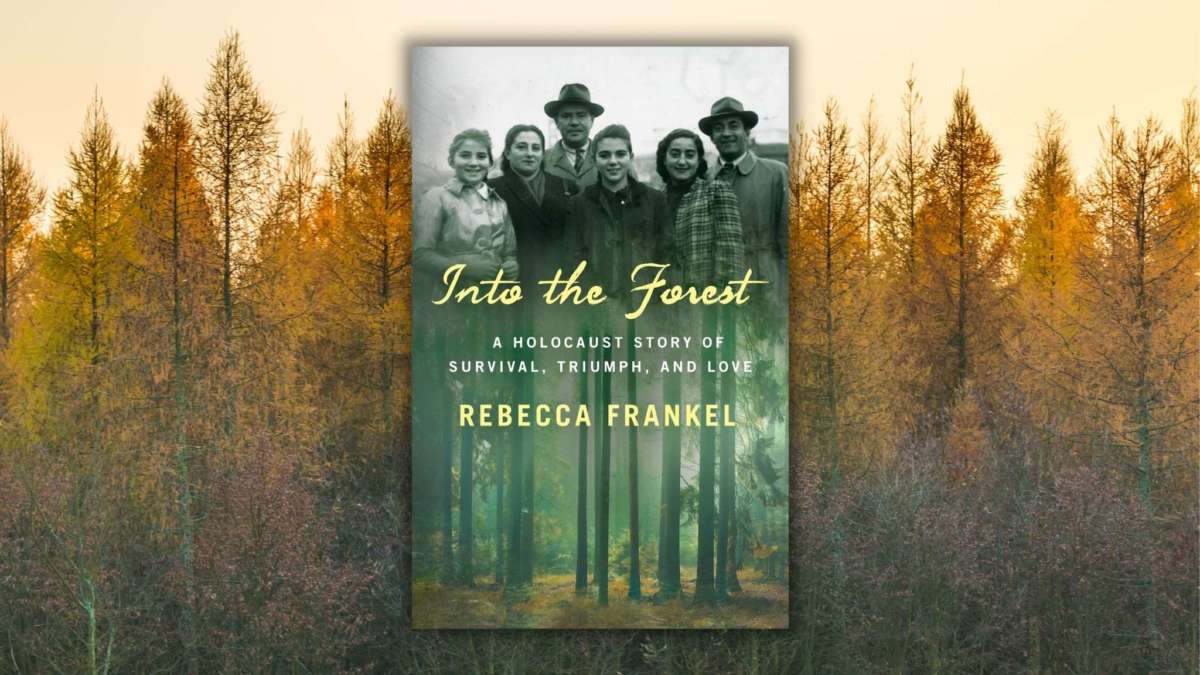Into the Forest: A Holocaust Story of Survival, Triumph, and Love by Rebecca Frankel
Into the Forest: A Holocaust Story of Survival, Triumph and Love (St. Martin’s Press) is an important work of nonfiction by award-winning author, editor and journalist Rebecca Frankel. The book centers on Morris and Miriam Rabinowitz who lived in the Polish Zhetel ghetto and other parts of Eastern Europe during World War II. Morris was a prosperous lumber dealer with a comprehensive knowledge of the woodlands. Miriam owned a successful patent medicine shop and possessed an intimate knowledge of herbal medicines and tinctures. These skills proved invaluable as their story unfolded.
Married in 1933, they enjoyed an idyllic life with their two daughters, Rochel and Tania, in addition to servants, an extended family and many close friends. After the rise of Hitler, the family was forced to flee Nazi persecution by escaping to the vast Bialowieza Forest. We follow their nightmarish struggle to survive the war years, their postwar travails — including three years of relocations to a series of DP (displaced persons) camps — and their eventual triumphant immigration to America where assimilation blossomed into a full, rich life.
A TRUE TALE OF RESILIENCE AND RESISTANCE
With the help of the Rabinowitzs’ story, Frankel has depicted a relatively unknown group of courageous Jews and partisan resistance fighters who fled to the primordial Bialowieza Forest near the shifting border between Poland, land-locked Belarus and part of present-day Lithuania. Reich Marshall Herman Goering had declared the vast forest preserve an unrestricted hunting ground where all animals and birds would be fair game, even endangered species, for the enjoyment of Nazi SS Officers. Incidentally, these hunting rights also applied to any humans who might be hiding there.
The Bialowieza Forest was a desperate last resort for Jews faced with certain death. Anyone who entered had little aside from luck, their wits, the clothes on their backs and the scant household items they managed to cling to while fleeing. After having escaped into the forest, they still weren’t safe from the Nazis, and now they had the elements to contend with. In winter, extreme temperatures could drop more than 40 degrees below zero and frequent blizzards left snow piled high for several months. Foraged food such as fungi, berries and herbs disappeared until the weather warmed, but with spring came flooding.
HIDDEN LIVES
To hide, they crafted camouflaged shelters using branches, moss, vines and leaves and dug cramped, low-ceilinged bunkers, but when the deciduous trees shed their leaves, much of the natural camouflage and color that helped conceal the refugees vanished. Plus, the Nazis’ continued pursuit forced them to move often. Silence was the key to survival, which meant that hunting with guns they may have stolen was out of the question. These intrepid people quickly acquired new skills, however, trapping small game and killing it with rocks.
They did have some help on the outside. Resistance fighters on missions would bring back food to share, and old friends among the Christian villagers, risking death, would occasionally leave supplies at the edge of the forest. Still, with food as scarce as it was, the villagers might betray one another for as little as a cup of sugar. It was a perilous, precarious day-to-day existence with unimaginable hardships that they endured for two years until their liberation in 1944 by conquering Soviet troops. Three-quarters of the approximate 800 people who sought shelter in the forest died of exposure, starvation, illness or were killed by German bullets before liberation. Only a small fraction managed to elude their Nazi pursuers who were armed with revolvers, high-powered rifles and machine guns, determined to succeed in their mission to annihilate all Jews.
RESPECTFULLY AND IMPRESSIVELY RESEARCHED
It took Frankel five painstaking years of research, many interviews and countless hours to probe the painful, suppressed childhood memories of the survivors whose family story is told here. Few accounts of the Polish-born Bialowieza Forest refugees have previously been documented, and Into the Forest is essential reading for anyone interested in Holocaust history.
Frankel’s book would be an excellent choice for serious book clubs that have previously chosen challenging titles like Tatiana de Rosnay’s Sarah’s Key and Irène Némirovsky’s Suite Française. In this gripping true story, the reader has an opportunity to learn about the conflicts, upheavals, war and mass murder inflicted by the Third Reich upon ordinary people. As difficult as the subject matter may be, readers will marvel at the strength and determination of the human spirit to survive and thrive.
The Holocaust remains real and yet incomprehensible. May we come away from reading Into the Forest with a renewed determination to remember and honor the past by celebrating life.
RELATED POSTS
Bestselling Author Kristin Harmel Shines Anew With “The Forest of Vanishing Stars”
Jennifer Rosner Takes Us Inside Gripping “The Yellow Bird Sings”





